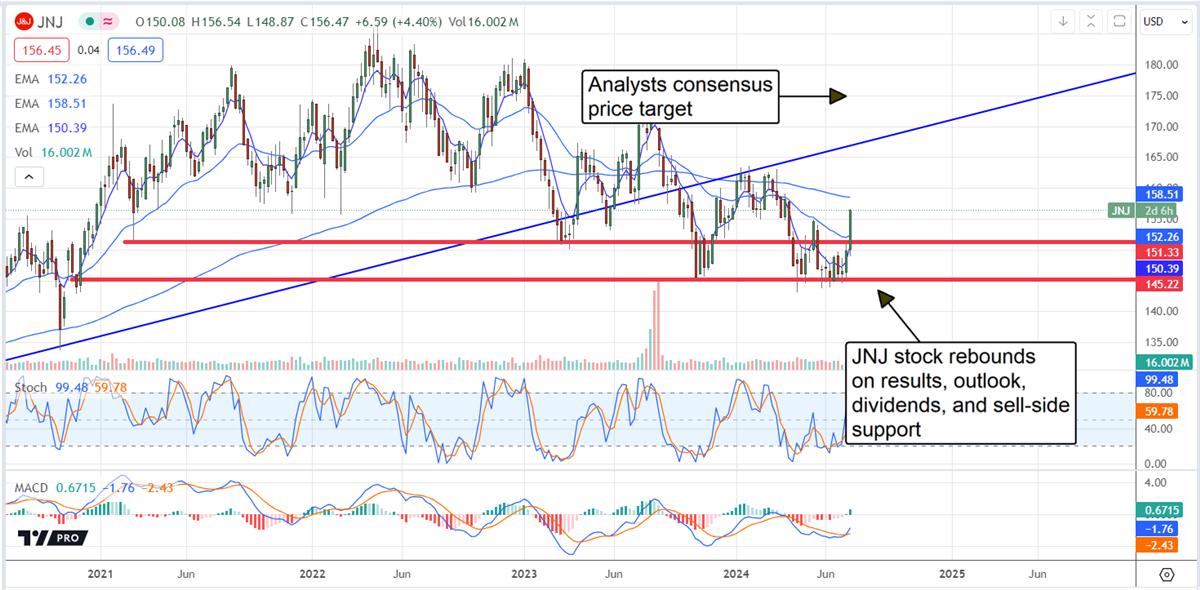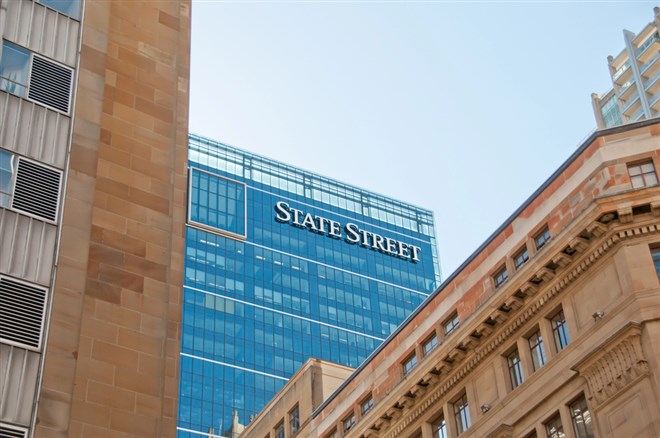Ticker Reports for July 17th
Real Estate Stock Signals a Boom in Manufacturing Activity
Most investors have been trying to squeeze the last leg in the technology sector rally, risking getting caught in the top of artificial intelligence names like NVIDIA Co. (NASDAQ: NVDA), which is now rejecting a new all-time high as news hit the market that the U.S. will increase technology bans and embargoes further against China, which will hurt semiconductor stocks.
Diversifying away from these risks will require investors to look not at the rear-view mirror but at the road ahead. Gold prices are now making a new all-time high, a rally not seen since the inflationary environment of the 1970s, and that means something for the U.S. dollar. Since central banks and other institutions can buy dollars to keep them strong, the dollar index doesn’t really reflect the economic reality of today.
But, earnings coming out of Prologis Inc. (NYSE: PLD) tell investors a different story, the same story that gold prices are trying to tell. The conclusion: Logistics and real estate stock will be in the eye of the storm as a potential boom in the manufacturing sector takes place. So, to diversify away from the potential technological pullbacks, here’s how investors can look at Prologis stock and beyond.
This Year’s Prologis Activity Forecast: Key Insights
As of right now, Wall Street analysts' consensus price targets on Prologis stock are $129.9 a share, or roughly 7% above the current price. However, investors should consider the following drivers to determine whether analysts will need to upgrade their views in the following quarters.
According to a Cushman & Wakefield (NYSE: CWK) report, the U.S. industrial market has recently lost momentum. However, there have been signs of a recovery in the second quarter, with rental rates for industrial property beginning to recover and vacancy rates improving.
Despite these improvements, the demand side of the equation wasn’t enough to warrant new development to increase the availability of new industrial property. Investors can see this trend in Prologis’ second quarter 2024 earnings press release.
Rental revenues rose to $1.8 billion, up from $1.6 billion a year prior, roughly a 12.2% increase in the past 12 months. On the other hand, strategic capital (tied to new development) revenues declined to $154.7 million from $799 million a year prior.
While the current state of the industrial sector in the U.S. doesn’t look like it’s in the best state, investors can look to Prologis management’s guidance to understand what might be coming in the following quarters. An earnings per share (EPS) guidance for $3.15 to $3.35 a share last is now pushed to a range of $3.25 to $3.45.
On seeing this new guidance, Wall Street analysts forecast up to 11.8% earnings per share (EPS) growth in the next 12 months. Analyst forecasts should be taken with a grain of salt, so here’s how investors can justify them by looking at the macro picture.
Prologis Positioned for Success with Support from Industry Movers
Recently, shares of RXO Inc. (NYSE: RXO) have rallied by over 50% on news of a new acquisition within the logistics industry. This move could capitalize on bullish trends that could be heading to the space in the future.
But how will the industry be supported now that the ISM manufacturing PMI index has been contracting for nearly 20 consecutive months? It has everything to do with the state of the U.S. dollar today.
Gold prices broke to an all-time high, a proxy for the market's sentiment toward the dollar, betting that the currency will be devalued soon. According to the CME's FedWatch tool, there's a 90% probability of interest rate cuts coming by September 2024, and with lower rates comes a lower currency.
With a lower dollar, U.S. exports will become more attractive to foreign buyers, as foreign currency will go a long way when buying American goods. Also, lower rates could spike mortgage and housing demand and consumer spending.
This is all good for Prologis, as some of its top tenants include Amazon.com Inc. (NASDAQ: AMZN), Home Depot Inc. (NYSE: HD), and FedEx Co. (NYSE: FDX). As consumer discretionary activity sees a boost on lower rates, Amazon warehouses could seek to expand and sign with Prologis, and so will Home Depot on the new home improvement products demand.
Why Prologis May Be a Strong Buy for Investors
Considering these trends, investors could expect to see Prologis recover on a valuation basis, which is where today's discounts make it a more attractive stock. On a price-to-book (P/B) basis, Prologis stock trades at a 1.9x multiple, which offers a discount of 25% compared to the real estate investment trust (REITs) industry's 2.5x average multiple.
Price action would offer a different stance to this discount, which can be considered as a leading indicator for what could come for the stock. Prologis stock now trades at 92% of its 52-week high price, which could fit the definition of the stock being in a bull market of its own.
I spent 44 years on Wall Street. If you knew what I know, you'd be terrified too.
Wall Street Legend on Economy: "If you knew what I know, you'd be terrified too."
Something huge is headed to America's shores – and it scares the hell out of Wall St. legend Louis Navellier. When it makes landfall, its impact will be more violent and more severe than any financial crisis we've ever seen… "No matter how prepared you think you are, you aren't prepared enough," he warns.
This Medical Giant's Stock Rebounds: A 15% Upside Is the Minimum
Johnson & Johnson (NYSE: JNJ) has struggled for the last year or two as the impacts of COVID-19 and the spin-off of Kenvue (NYSE: KVUE) work their way through the system. The takeaway from the Q2 earnings release is that organic growth is back in the picture. Reported revenue is down compared to last year because of the Kenvue spin-off. Still, the shift to sequential growth is a positive signal compounded by a recent acquisition and a robust pipeline that promises to drive results for this healthcare company over the next few years.
Johnson & Johnson Reports Strong Quarter, Gives Mixed Outlook
Johnson & Johnson had a solid quarter with strength in all major operational categories. The $22.4 billion is up 4.3% on a continuing operations basis, 20 basis points better than expected, with operational growth of 6.6% and ex-COVID of 7.1%. Strength was driven by sales in the U.S., which are up 7.6% compared to the 5.3% gain internationally; Innovative Medicine grew by 8%, leading MedTech’s 4% increase.
The margin is another area of strength. The company experienced a GAAP loss due to one-offs and non-cash impairments, but the damage was less than expected, leaving the adjusted results ahead of the consensus. The adjusted EPS of $2.82 grew by 10.2% to outpace the top-line strength and drive robust cash flows. Cash flows are prioritized for growth, dividends, and repurchases, which are part and parcel of the share price outlook. The company did not report any repurchases for Q2, but activity in the last year reduced the average diluted count by more than 7%, aiding the bottom line's strength.

Guidance is mixed but favorable to investors. The company raised its guidance for reported and operational growth, but the operational figure is shy of the consensus. The salient detail is that adding Shockwave Medical and Proteologix to the portfolio will boost revenue and earnings above the consensus, resulting in favorable revisions from the analysts.
Analysts and Institutions Provide a Tailwind for JNJ Stock Price
The analysts' activity in JNJ is light this year but bullish for the stock price. The consensus rating of Hold has been firm for at least twelve months while the consensus price target edged higher. The most recent revisions were released less than two weeks before the Q2 release, reiterating an Overweight rating and a $215 price target. The $215 target is the highest on Wall Street and is leading the market into the high end of the analysts' range: consensus is good for a 15% gain, while the range’s high end adds another 22% upside.
Institutional activity is mixed in 2024 but shows a shift that will provide another tailwind for this market. The institutional activity was tilted to the downside in Q1, aiding the decline in the share price, but shifted to net-buying in Q2. The trend continued into Q3 and is gaining momentum. Recent buyers include numerous small wealth managers, evidence of the stock's growing appeal.
Johnson & Johnson Dividend is Safe and Growing
Johnson & Johnson’s dividend is attractive, with the shares trading near long-term lows. The annualized payout of $4.96 is worth about 3.3% in yield, which is near a fifteen-year high. The distribution is expected to grow, sustaining the mid-single-digit CAGR run the last few years, but the yield will not last. JNJ trades at a deep discount on its historic P/E, which should be expected to diminish over the coming years.
Shares of JNJ are up more than 2% on the Q2 news, confirming support at the critical level. The market is above near-term resistance and indicated higher with a chance of gaining $5 in the next few days and $10 to $15 over the coming weeks and months. Assuming the Q3 results align with the outlook, earnings and analysts' revisions should drive this market back to record levels by the end of the year.
Biden Pushing To Replace The Dollar With a Digital Coin, Control Currency.
Donald Trump once again sounded the alarm against Fed-controlled digital currencies (CBDCs).
If these plans are implemented, it could mean the end of America as we know it.
Financial Giant's Shares Soar on EPS Beat and Record Asset Levels
State Street (NYSE: STT) is a financial services firm that reported Q2 2024 financial results on Jul. 16, 2024. Shares were up 7.45% after the release as the firm beat adjusted earnings per share estimates by 12 cents. Revenue also beat expectations by $45 million.
Even with the rise in share price post-earnings, the firm is still underperforming the market and its sector year to date. State Street is up 11.5%. The financial services sector, represented by The Financial Select Sector SPDR Fund (NYSEARCA: XLF), is up 16.5%.
Let’s examine the firm's operations, which are among the top 50 largest publicly traded companies in the capital markets industry worldwide. We’ll then examine the financial results to understand why the market reacted positively. Lastly, we will examine the outlook, including what Wall Street analysts expect going forward.
State Street: A Big Player in Custodial Services and Index Funds
State Streets' operations are divided into two business lines: Investment Servicing and Investment Management. The investment servicing segment works with institutional clients, including mutual funds, corporate and public retirement plans, and foundations and endowments. Its technologies allow clients to execute financial transactions, and the firm primarily acts as a custodian. Custodians provide for the safekeeping of financial assets. State Street provides a range of software to institutional clients. This software covers things like reporting, compliance, and portfolio analysis.
The firm’s Investment Management business provides investment products through its State Street Global Advisors division. The firm offers both passive and actively managed investment solutions. But, most of its assets under management (AUM) are in products that track market indexes, such as the S&P 500.
For example, State Street manages the largest S&P 500 exchange-traded fund (ETF), the SPDR S&P 500 ETF Trust (NYSEARCA: SPY), with $564 billion under management. Primary competitors in this area include BlackRock (NYSE: BLK) and Vanguard.
The firm breaks down revenue into two primary sources on its income statement. The first is fee revenue, which made up 79% of total revenue in 2023. It generates revenue from asset management fees and fees for other services it provides in both divisions mentioned above. The second is net interest income (NII), which accounted for 23% of total revenue in 2023. The firm generates this income from investing client deposits. An “other income” line contributed -2% to total revenue in 2023.
Record Assets Boost State Street's Stock Price
State Street posted an earnings surprise of 6%. This influenced the positive reaction of the market, despite adjusted EPS being down 1% from last year. The firm posted records in assets under custody/administration (AUC/A) and assets under management (AUM).
AUC/A accounts for assets in the custodial part of the business and came in at $44.3 trillion. This number grew 12% from the previous year. State Street won $291 billion in new assets and secured $2.4 trillion in assets yet to be installed.
AUM represents assets in the investment management part of the business and came in at $4.4 trillion. This number was nearly $100 billion higher than expected and grew 16% from the previous year. Market share gains in U.S. low-cost ETFs and Europe, Middle East, and Africa (EMEA) ETFs helped reach this record.
Another sign of strength for the firm was the announcement of a 10% increase in its next quarterly dividend to $0.76 per share. Using the current share price would give the firm a dividend yield of 3.6%. This puts the firm’s dividend yield significantly above the average of large-cap firms in the capital markets industry, which is 2.4%. It is also significantly above that of BlackRock.
Total revenue increased by 3%, driven by gains in NII of 6%, and fee revenue up by 2%. An increase of 11% in both management fee and foreign exchange trading fee revenue helped boost overall fee revenue.
Adding Context to State Street's Results and Examining Analyst Price Targets
It is impressive to see State Street's record asset levels, which were a large reason for the stock's rise. A concern going forward is that fee revenue from most other large sources, such as back-office services and software, declined. The rising market artificially helped rising assets and higher management fee revenues. This boosted the numbers without the firm doing anything. Company management has more control over service fees. So, seeing these numbers go down dampens the results.
The average price target sits at $85.16, implying almost no upside. However, Wells Fargo increased its price target after the release to $98, implying an upside of 16%.





